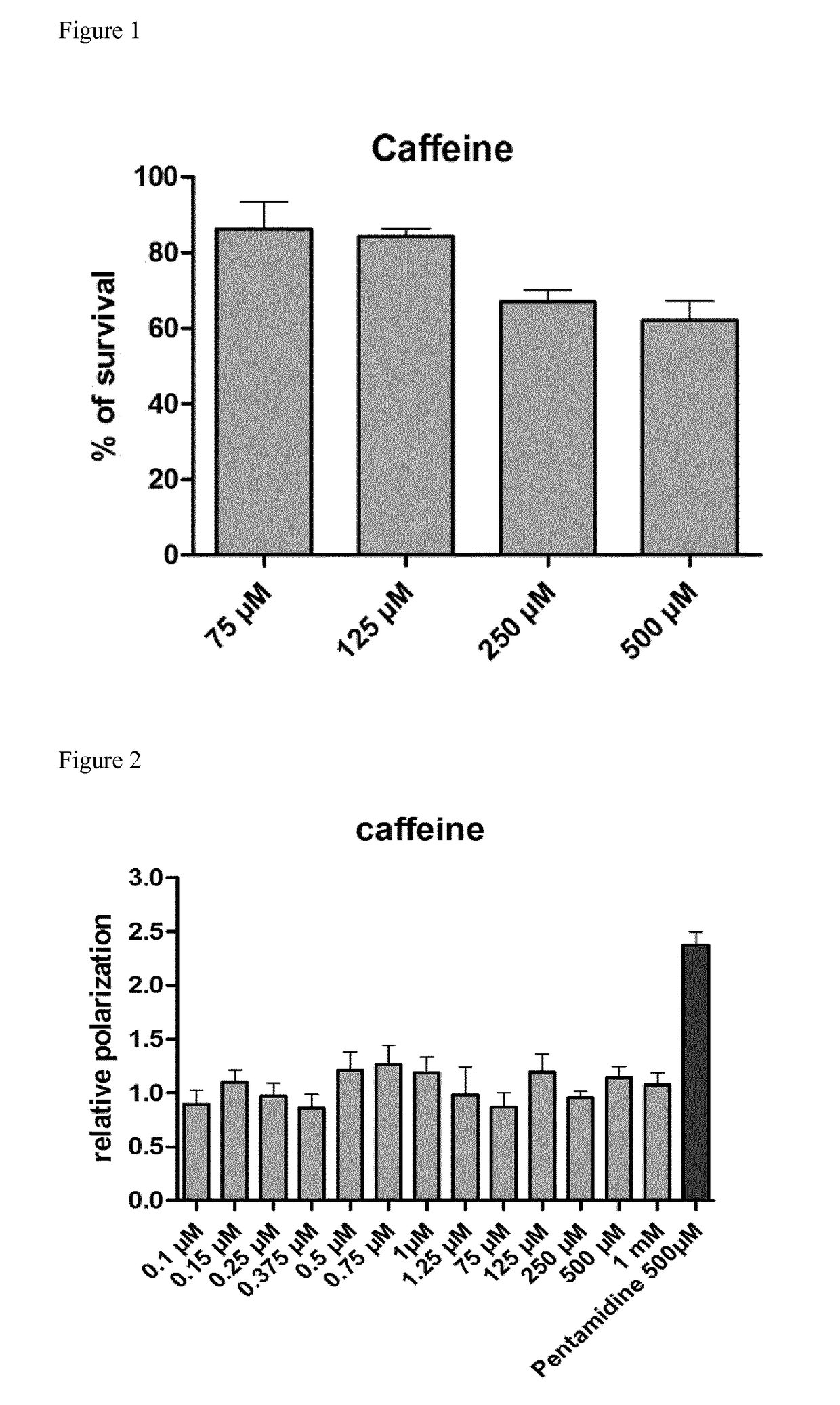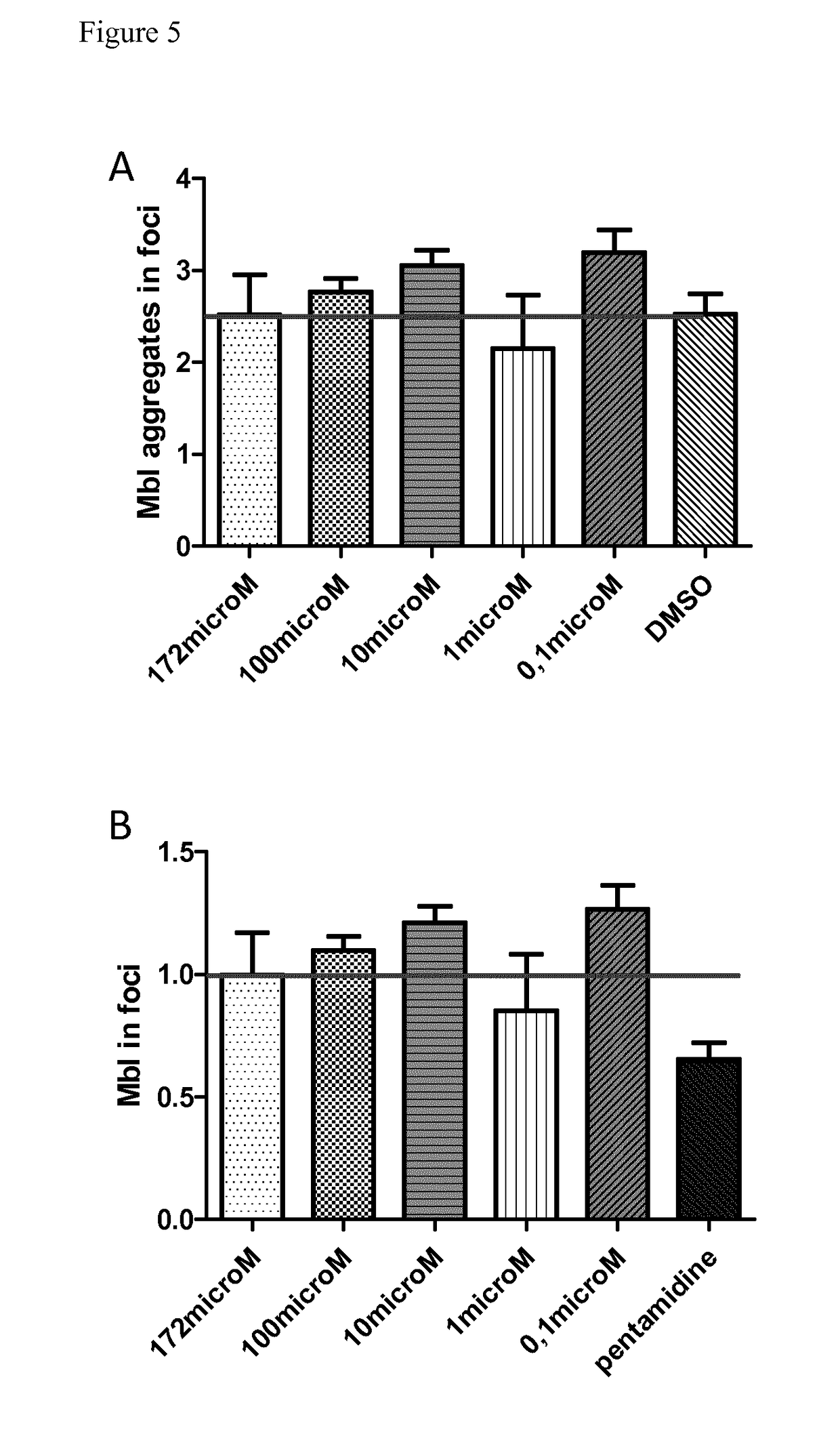Caffeine for the treatment of myotonic dystrophy type 1 and type 2
a myotonic dystrophy and caffeine technology, applied in the field of rare diseases, can solve the problems of presenile cataracts, atrioventricular block or ventricular arrhythmias, and the sudden death of almost 30% of dm1 patients, and achieve the effect of reducing the risk of dm1, and reducing the risk of dm1
- Summary
- Abstract
- Description
- Claims
- Application Information
AI Technical Summary
Benefits of technology
Problems solved by technology
Method used
Image
Examples
examples
Caffeine is Non-Toxic for Human Fibroblasts Cells
[0079]Reference is made to FIG. 1.
Materials and Methods
[0080]Fibroblast cells were grown in DMEM with 4.5 g / L of glucose, 1% of penicillin and streptomycin (P / S) and 10% foetal bovine serum (FBS) (Sigma). Cells were aliquoted in 96-well plate with 1.0×104 cells per well and incubated for 24 h. Caffeine (Sigma-Aldrich) was added to a final concentration of 75 μM, 125 μM, 250 μM and 500 μM in DMEM and cells were incubated for 24 h. To measure cell viability, MTS tetrazolium salt was added to each well and was incubated for 4 h at 37° C. in a humidified chamber with 5% CO2. The conversion of MTS into soluble formazan (accomplished by dehydrogenase enzymes from metabolically active cells) was measured by absorbance at 490 nm (CellTiter 96® Aqueous Non-Radioactive Cell Profileration Assay, Promega). Data were transformed to percentage of survival relative to cells not exposed to caffeine, which established 100% viability.
Caffeine Cannot Bi...
PUM
 Login to View More
Login to View More Abstract
Description
Claims
Application Information
 Login to View More
Login to View More - R&D
- Intellectual Property
- Life Sciences
- Materials
- Tech Scout
- Unparalleled Data Quality
- Higher Quality Content
- 60% Fewer Hallucinations
Browse by: Latest US Patents, China's latest patents, Technical Efficacy Thesaurus, Application Domain, Technology Topic, Popular Technical Reports.
© 2025 PatSnap. All rights reserved.Legal|Privacy policy|Modern Slavery Act Transparency Statement|Sitemap|About US| Contact US: help@patsnap.com



